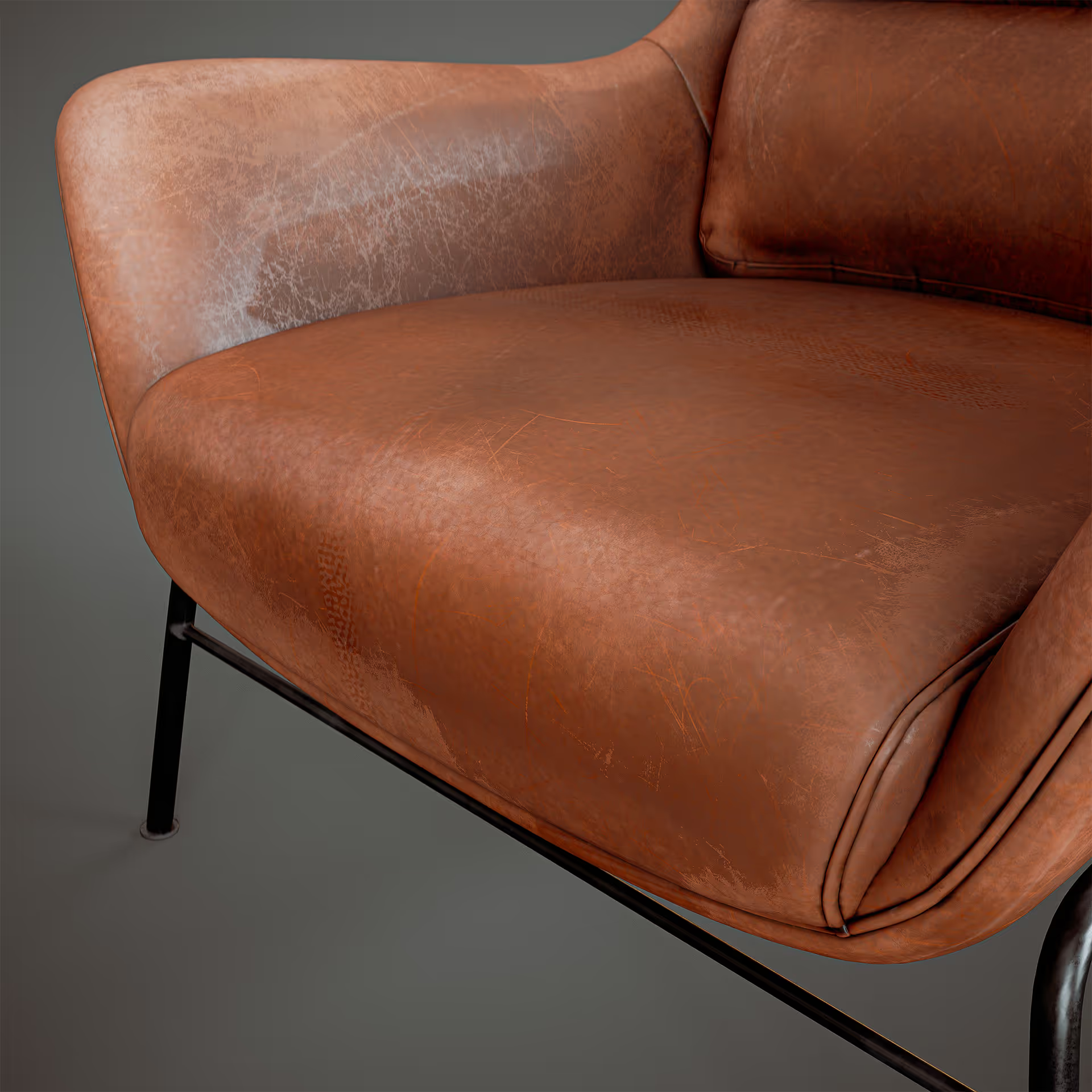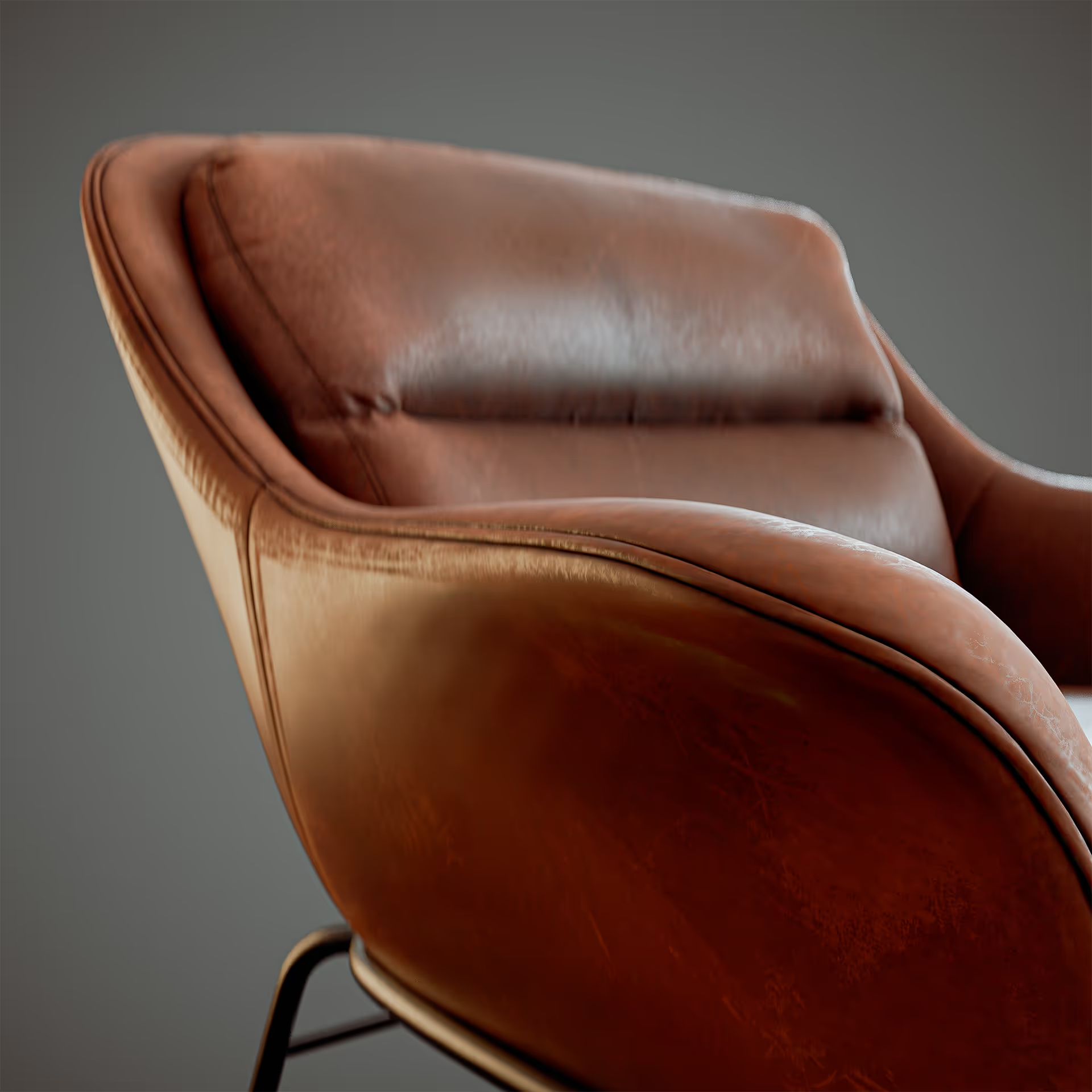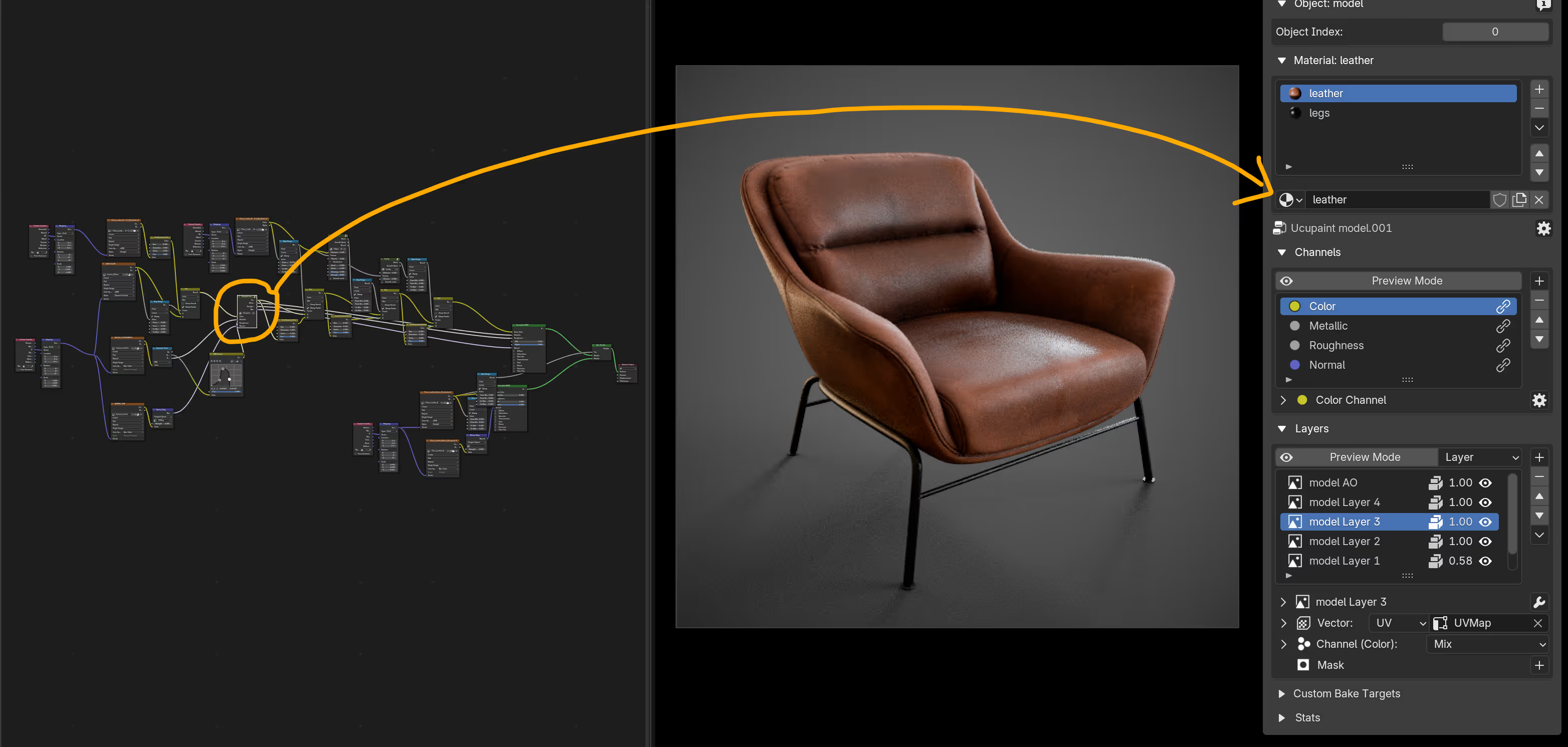Forget That It’s Free: Ucupaint Wins on Quality

You know what I love? Great tools.
You know what I love even more than great tools? Great tools that work inside Blender. Why? Am I some Blender purist? No. I just like convenience. As much as I like being a 3D artist, I also like being a dad, among other things. And convenience helps me balance that. Not having to switch software, export, import, and shuttle assets around is huge. That kind of convenience shapes entire pipelines. Once you have a solid layer-based texturing solution inside Blender, you don’t just get layer painting. You also tap into all the shader-based procedural magic Blender already has (and trust me, these benefits are massive, backed by some of the best dev work in Blender). That’s why I’m so excited about Ucupaint.

A Short Story: 2019
Back in 2019 I was working as a lead at a small studio. I’d been using Blender for 10 years, but I also used Maya and other tools professionally. Being in a studio that predominantly used Maya, some peers loved to tease:
“Why use Blender? It’s not industry standard. The UI sucks. The navigation’s weird. I hate all the shortcuts.”
At the time, Blender 2.8 was coming. It was a huge overhaul, including the UI. As Blender got better and more artists accepted it, I noticed a shift. Less “Yeah, but it’s free” and more “Yeah, but Blender can actually do this.”
For perhaps the first time, I started seeing features come to Blender first, which other software started to copy and implement in later versions. This was a big deal. A lot of features I'd traditionally seen suggested for Blender were things people liked in other packages, not the other way around. Blender was finally leading the charge (in areas).
I didn’t start using Blender because it was cutting-edge. I used it because I was in high school, and that’s what we had. I fell in love with it, quirks and all. I even won some national animation competitions using it (Skills USA). A lot of us came to Blender because it was free and accessible. Many of us stayed because it grew into a serious tool. I'm lucky enough to still work professionally in an industry I love. A big part of that is because Blender adapted with my career. It’s flexible, versatile, and yes, free! But the absense of a price tag is only a small part of the equation. And it's no longer one we have to lead with.

Enter Ucupaint
What's the point of my story? Ucupaint is free and open source, made by Ucupumar. In his words:
“I’m a big fan of the open-source ethos. Ucupaint wouldn’t be what it is without the many contributions from others.”
Its openness makes it accessible, but what makes it great isn’t simple because it's free. It’s the way that openness invites collaboration, and the features and usability of the tool itself. It's the same thing we saw with Blender. A quirky tool used by a few has come to dominate in many ways because the development has been community focused. Not everyone uses Blender, but a lot more use it now than did back when I was starting. It went from something to poke fun at, to a tool that almost everyone quietly decided they better start learning on the side, "just in case."
I’ve been searching for a solid layer-based painting solution inside Blender for years. The industry default is still Substance or Marmoset, and if you want a studio job, you’ll have to learn what they use. But if you’re like me, working indie, freelancing, and defining your own pipeline, you should look at Ucupaint.
My First Test
My first project was a textured leather chair. What blew my mind wasn’t just the layer painting. It was that all the layers lived in a single shader node. That shader node (naturally) is within Blender's node network.

That’s the magic. You get the best of both worlds: layer-based painting and Blender’s overpowered procedural node network. That’s especially great for someone like me, who has spent a good chunk of my career exclusively texturing in Blender.
Yes, you can import maps from Substance and still use Blender’s nodes. But the real win here is no switching. In Substance, you would paint wear and scratches, bake maps, import them into Blender, add procedural details, bake again, go back to Substance for changes, and repeat.
I know Substance has tiling and procedural tools, but they do not match the depth of Blender’s shader editor. Even if you use Substance Designer, there is still friction when moving assets back and forth to Blender. Every round trip costs time and mental focus.
With Ucupaint, everything is in one place and updates in real time. It is not just a free alternative. It is a pipeline unlock. It is hard to quantify the time saved, but using Ucupaint keeps me in a complete state of texturing flow as I switch between the powerful methods I already know and love and add new layer-based functionality.
Keep in mind this is my first project with Ucupaint. If I did it again, I would start with higher-resolution maps (you can always scale down, but not up) instead of the 1K I defaulted to. I am also realizing how much I miss the brushes and certain key functions in Substance. To make this work the way I want, I plan to contribute to a better brush ecosystem for Ucupaint, along with some convenient node groups I plan to create.
Don't Take My Word For It

Let’s go full Reading Rainbow here. You don’t have to take my word for it. I’ll show you.
Substance is still a monster of a program with years of development resources behind it. But retaining Blender’s existing texturing features and adding a capable layer-painting system makes Ucupaint my actual preferred workflow, not just my “free” option.
Am I a little biased? Sure, I can admit that. Substance is owned by Adobe, and one reason I’m looking for an alternative is because I don’t love the power a company like Adobe has to push artists around without good options.
If you’re in a studio, use what your lead needs you to use. If you’re looking to work in a studio, learn what they want you to learn. I don’t want to hear the “But… but… it’s not industry standard.” I’m not talking to you. 😅 There are plenty of artists out there who will give you great advice for getting a job at a studio. I’m not one of them. I’m speaking to indie artists. Those of us building our own pipeline. I want to show you why this works so well, not just tell you.
What’s Next
In the coming weeks and months, I’ll be rolling out Blender texture training that combines Ucupaint’s layer painting with the procedural power of Blender’s nodes. We'll be looking at the software, and also some hardware options when you're ready to level-up (like Wacom's recently refreshed line of Cintiq tablets. I have a smaller 16" on the way. More on that later).
This post is just a preview. If you’re interested, come along for the ride! I'll be posting here on my Blog, as well as some official YouTube videos. Please consider supporting my Patreon if you're looking to get access to scene files, some behind the scenes content, or just to support my work.